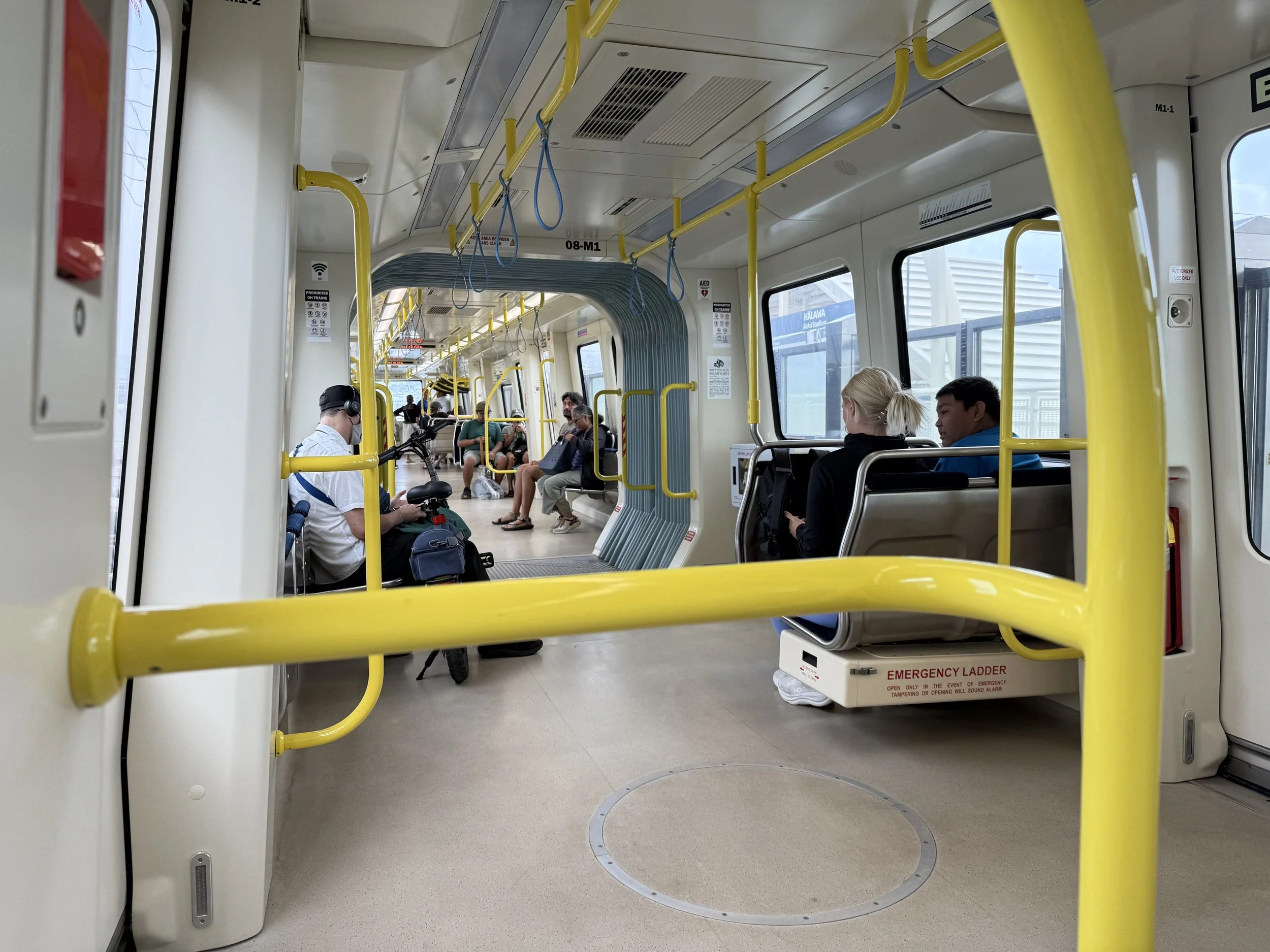Displacement and the palimpsest of progress on my native O`ahu
Photo: Gerald Farinas.
This past week, revisiting my native O`ahu and witnessing its landscape unfold, I find myself caught between admiration for human ingenuity and a profound melancholy for what is displaced in the name of progress.
The drive today, descending through the Ko`olau mountains on Interstate H-3 after passing through the Tetsuo Harano tunnels, crystallized this tension.
It was a journey through time, a carving through three million years of volcanic history, deep red earth, and the mineral legacy of this island’s formation.
In a few high-speed miles, we witness an audacious act of engineering: the creation of a pathway through what was once an impenetrable, sacred barrier. The tunnels themselves are a testament to our drive to conquer distance and geography, reducing the majestic Ko`olau to an obstacle overcome.
Yet, what strikes me is not the victory, but the scar. We’ve been taught to view such infrastructure, the concrete and steel, the asphalt ribbon, as the clear, inevitable march of civilization. Modernity, in this narrative, is the replacement of the old, the natural, and the inefficient.
This standard view of progress feels inadequate when reflecting on O`ahu. It fails to account for the deeper, more complex layer of history that is paved over. As the H-3 descends toward the leeward side, the view opens up to the Ewa Plain and the brand-new Skyline elevated heavy rail system. The elevated track curves gracefully, mirroring the coastline around Ke awa lau o Pu`uloa—the many-harbored waters of Pu`uloa, known by Americans as Pearl Harbor.
The Skyline is the newest manifestation of this developmental impulse. It is a necessary response to modern life, designed to alleviate congestion and connect communities.
But its path, hugging the coast and slicing through the landscape, seems to reiterate a pattern of displacement. Ke awa lau o Pu`uloa is itself a palimpsest of conflicting histories: first, a productive, life-sustaining estuarine ecosystem for the native inhabitants; then, a strategic naval base vital to American geopolitical ambition; and now, the terminus of a $9.2 billion transit project meant to serve a burgeoning population.
Each layer of development, from the dredging of the harbor to make way for battleships, to the pouring of concrete for the rail piers, sits atop what was once cultivated land, native habitat, or burial grounds.
We see the final, engineered product and call it a win for efficiency, yet we rarely pause to feel the weight of what was removed to make space for it.
This displacement is not just physical; it is cultural and ecological. Every shovel-turn that carves into the earth also severs a connection to the traditional land management practices and the ancient place names that hold the island’s memory.
On O`ahu, the very notion of progress is complicated by the fact that the island is inherently finite and profoundly sacred. We are not building on an empty slate; we are building on a legacy.
To drive through the Harano tunnels is to drive through the shattered spine of a goddess, and to see the rail line arching toward Pu`uloa is to see the latest claim laid upon a sacred natural resource.
My week here has become an extended meditation on this reality. The beauty remains undeniable: the way the sun catches the ridges of the Ko`olau, the smell of the salt spray, the enduring spirit of aloha. But these are now viewed through a lens of loss, seen over the guardrails of the newest highway or beneath the shadow of the latest concrete pylon.
The real work of living in a place like O`ahu, perhaps, is not to simply accept the inevitability of this progress, but to hold the space for what has been lost, ensuring that the necessary modern infrastructure is built with a deep, reverent understanding of the earth that it displaces.
It is an acknowledgment that every act of building is also an act of erasure, and that true stewardship requires balancing the future need for mobility with the ancient, unyielding presence of the land itself.
Photo: Gerald Farinas.


